Boot: Salomon S/MAX 130
Stated Flex: 130
Available Sizes: 24-29.5
Stated Last (size 26.5): 98-104 mm (can be expanded ~6 mm)
Stated Forward Lean: 13.5°
Size Tested: 26.5
Stated Boot Sole Length: 304 mm
Blister’s Measured Weight (26.5):
- Shells, no Liners: 1389 & 1407 g
- Liners, no Footbeds: 433 & 429g
- Shells + Liners = 1822 & 1836 g
- Stock Insoles: 18 & 18 g
Buckles: 4 micro-adjustable
Power Strap: 45 mm cam-style
Shell Material:
- Cuff: Polyurethane w/ “Sense Amplifier” insert
- Shoe / Clog: Polyurethane + Kaprolene + Carbon-infused Polyamide “Core-Frame”
Soles: Alpine
Binding Compatibility: Standard Alpine Bindings; MNC Bindings
MAP: $699
Boot: Salomon S/Max 130 Carbon
Stated Flex: 130
Available Sizes: 24-30.5
Stated Last (size 26.5): 98-104 mm (can be expanded ~6 mm)
Stated Forward Lean: 13.5°
Size Tested: 26.5
Stated Boot Sole Length: 304 mm
Blister’s Measured Weight (26.5):
- Shells, no Liners: 1291 & 1292 g
- Liners, no Footbeds: 445 & 446 g
- Shells + Liners = 1736 & 1738 g
- Stock Insoles: 33 & 33 g
Buckles: 4 micro-adjustable
Power Strap: 45 mm cam-style
Shell Material:
- Cuff: Grilamid w/ “Sense Amplifier” insert
- Shoe / Clog: Polyurethane + Kaprolene + “Carbon Core-Frame”
Soles: Alpine
Binding Compatibility: Standard Alpine Bindings; MNC Bindings
MAP: $799
Reviewers:
- Jonathan Ellsworth: 5’10”, 175 lbs
- Eric Freson: 5’9″, 170 lbs
Test Locations: Crested Butte, CO; Jackson Hole, WY; Taos Ski Valley, NM
Days Skied (between both boots & 2 reviewers): ~60
[Editor’s Note: our review was conducted on the 18/19 S/Max 130 & 18/19 S/Max 130 Carbon, which both return unchanged for 19/20, 20/21, and 21/22, apart from colors.]
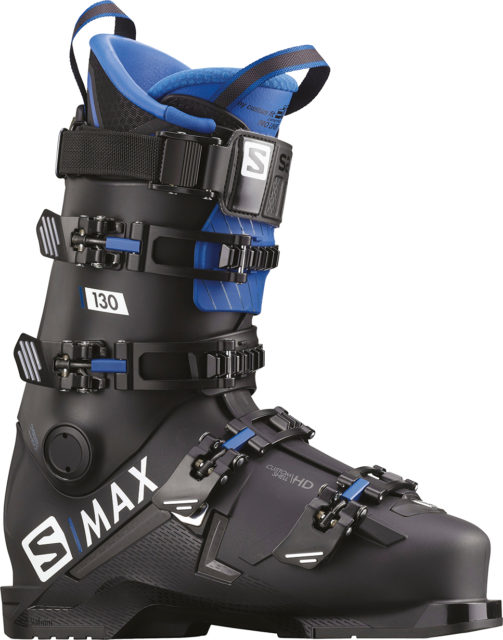
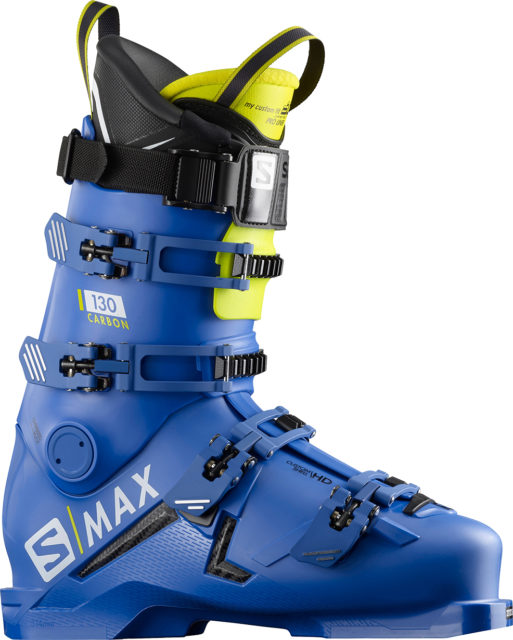
Intro
For the 18/19 season, Salomon retired their men’s X Max line of ski boots, and replaced it with a brand new line of boots called the S/Max (which return unchanged for 19/20, apart from colors). And these new S/Max boots are a pretty significant departure from the X Max line they replace. The new S/Max boots are very light, feature a new last, and have a new heat-moldable shell.
But while many companies are marketing their lightweight alpine boots to people who want a more forgiving and easy-to-ski boot, Salomon is still labeling the S/Max as their “On-Piste Performance” boot.
So just how powerful, precise, and high-performance are these S/Max boots? Can they really hang with heavier high-performance ski boots, or do they feel more laid back and / or offer less of a progressive flex? And should the new S/Max boots really be regarded as on-piste-only, high-performance groomer zoomers, or would we actually recommend them for all-mountain use, too?
Eric Freson and I have now both spent a lot of time skiing in the S/Max 130 and S/Max 130 Carbon, and here we offer our takes on where these boots excel, how they compare to some other options in this category, and who we think should be considering them.
The Lineup of S/Max Boots
I’ve been reviewing the S/Max 130 and S/Max 130 Carbon, but Salomon will also be making a S/Max 120, 110, and 100. There will not be any women’s-specific S/Max boots for 18/19, but the women’s X Max lineup will still be available, which includes the X Max 120 W, 110 W, 90 W, and 80 W.
Salomon S/Max 130 vs. S/Max 130 Carbon
It’s not very common for a company to make two boots with the same stated flex within the same product series. But Salomon is offering two different 130-flex “S/Max” boots.
Both the S/Max 130 and S/Max 130 Carbon feature what Salomon is calling “Core-Frame.” Since the S/Max boots use a thinner shell material (to reduce weight), Salomon reinforces the area around and under the ankle and midfoot in order to maintain power transfer. This reinforcement is the Core-Frame element (shown below).
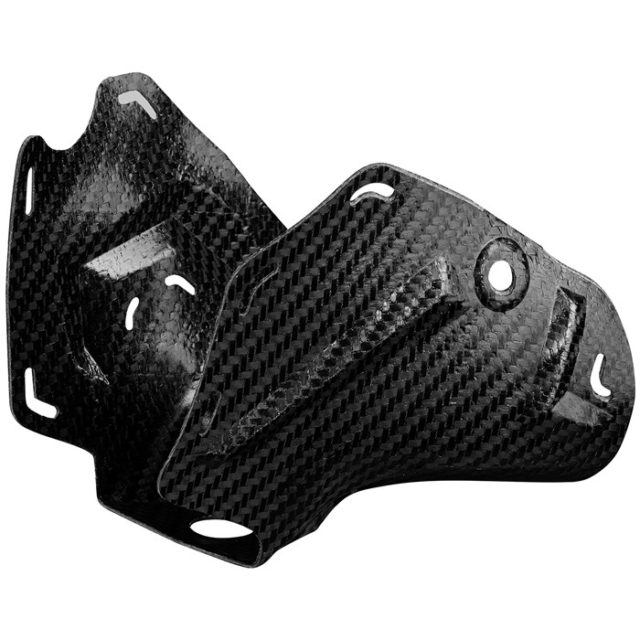
The primary difference between the S/Max 130 and S/Max 130 Carbon is that the Carbon version has a full-carbon Core-Frame, while the regular S/Max 130 features a carbon-infused Polyamide (PA) Core-Frame.
The S/Max 130 Carbon also has a cuff made of Grilamid, while the S/Max 130 has a cuff made of Polyurethane (PU).
So what’s supposed to be the real-world difference? According to Salomon, the story is that the S/Max 130 Carbon has “more energy and response” than the regular S/Max 130, though both boots still get the stated flex rating of 130. So this is obviously something that we’ll be weighing in on — how similar or different these two boots feel and perform on snow.
Weight + Comparisons
Salomon is emphasizing the new S/Max line’s low weight, and with good reason. Both boots are quite light compared to most traditional alpine boots, and the S/Max 130 Carbon is about 100 grams lighter than the regular S/Max 130.
For reference, here are our measured weights for some other notable boots in this class, as well as some more traditional alpine boots to give an idea of the weight differences. Our measured weights show the mondo size of the boot, then the weight of each shell. Then the weight of each liner. Then the total weight for shells + liners, listed in grams:
Head Nexo LYT 130 (26.5): 1082 & 1089 + 427 & 436 = 1509 & 1525 g
K2 Recon 130 LV (26.5): 1276 & 1277 + 369 & 374 = 1645 & 1651 g
Atomic Hawx Ultra 130 (26.5): 1270 & 1267 + 425 & 426 = 1695 & 1693 g
Salomon S/Max 130 Carbon (26.5): 1291 & 1292 + 445 & 446 = 1736 & 1738 g
Salomon S/Max 130 (26.5): 1389 & 1407 + 433 & 429 = 1822 & 1836 g
Nordica Promachine 130 (26.5): 1428 & 1428 + 444 & 445 = 1890 & 1891 g
Head Raptor 140 RS (26.5): 1892 & 1899 + 547 & 548 = 2439 & 2447 g
Looking at this list, it’s kind of crazy to see how big of a difference there is between the (extremely light) Head Nexo LYT 130 and the Head Raptor 140 RS. And while the S/Max 130 and S/Max 130 Carbon aren’t as light as the Nexo LYT 130, they’re significantly lighter than the Raptor 140 RS and most other traditional, 130-flex alpine boots we’ve reviewed.
Heat-Moldable “Custom Shell HD”
The S/Max boots feature a new heat-moldable shell technology that Salomon calls “Custom Shell HD.” The 18/19 versions of the Salomon S/Lab MTN, MTN Explore, and MTN Explore W will also feature Custom Shell HD.
This new heat-moldable shell can be molded quicker than Salomon’s other custom shells (10 minutes for boots with Custom Shell HD vs. 20 minutes for boots with Salomon’s “Custom Shell 360°”). Salomon also claims that Custom Shell HD allows for “an even more detailed customization of the shell around the foot.” Like most of Salomon’s heat-moldable shells, boots with Custom Shell HD can be molded in the lower shell, but not the cuff.
Liner
Both the S/Max 130 and S/Max 130 Carbon have extremely sleek, truly gorgeous, rather thin and pretty firm liners. It’s worth emphasizing just how streamlined these are compared to pretty much every other ski boot liner I’ve ever used. I don’t frequently find myself tempted to call a ski boot liner a work of art, but consider me tempted.
The S/Max 130 Carbon’s liner is a tiny bit heavier (10-15 g) than the S/Max 130’s, but the two liners feel very similar.
While the Nordica Promachine 130’s liner weighs about the same as the liners in the S/Max 130 and S/Max 130 Carbon, the Promachine 130’s liner feels a bit more plush.
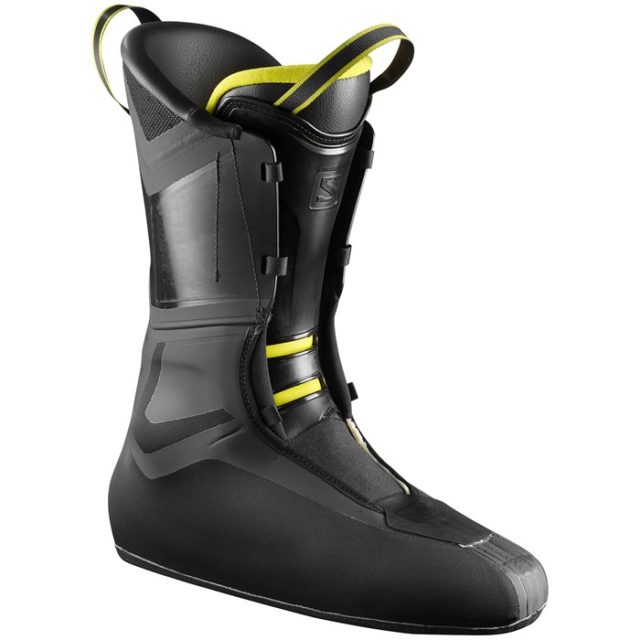
The S/Max boots’ liners are also unique in that they use a seamless construction. It’s a very nifty-looking construction, and without question, these would be the liners that Batman would use.
[Important Note #1: For those who’ve been keeping score over the years, this means that we Blister folks would have Batman skiing on V-Werks Katanas and in these S/Max boot liners — though, naturally, he’d need to paint the shells of these S/Max boots black too — or stuff them into the black shells of the 18/19 S/Lab MTN. And we also noted that, if Batman preferred to get around the backcountry on a splitboard, he would undoubtedly make use of the Spark R&D splitboard crampons.]
[Important Note #2: The above paragraph just launched a long digression between Luke Koppa and me, and that will make its way into a Topic of the Week sometime in the future. Stay tuned.]
I personally can’t say that I’ve had problems with more conventionally-constructed liners, but if you’ve had issues in the past with your toes chafing on the inside of other boot liners, this might be worth noting.
Buckles
Pretty straightforward — 4 micro-adjustable aluminum buckles that are nice and easy to use.
Power Strap & “Sense Amplifier Cuff”
Both the S/Max 130 and S/Max 130 Carbon feature Salomon’s new “Sense Amplifier Cuff.” This basically means that the boots use a different plastic in the upper front part of the cuff that is supposed to allow for quicker rebound and better snow feel.
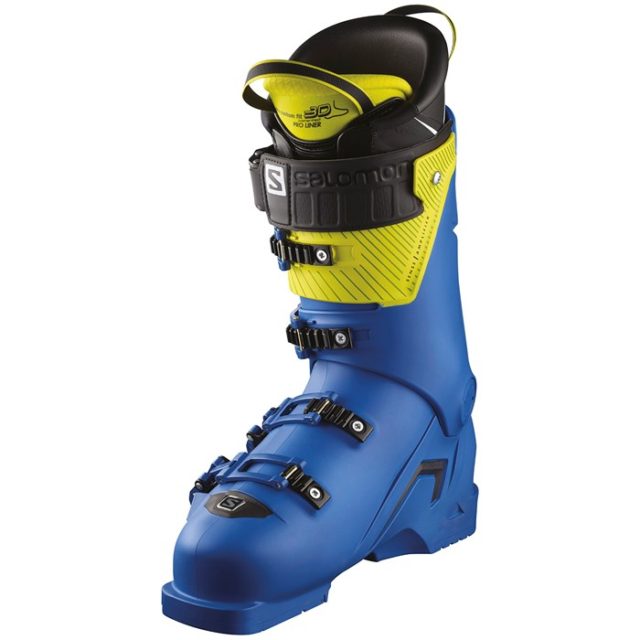
By the way, “Better snow feel” isn’t something that I tend to attribute specifically to the cuff of a boot per se, but we’ll be paying attention to this. What we can say is that the cuff of the boot is very low-volume, and this is something that I tend to like — I absolutely hate it when I feel like I can’t get a very tight wrap around my lower leg in a ski boot. And that isn’t any problem whatsoever in these S/Max boots.
Both boots’ cuffs also have a unique power strap layout. Parts of the 45 mm cam-style power straps on the S/Max 130 and S/Max 130 Carbon sit directly on the liner (rather than the shell), and the power strap can be routed two different ways in order to customize the characteristics of the flex (i.e., make it a bit tighter and more precise, or slightly looser and more forgiving).
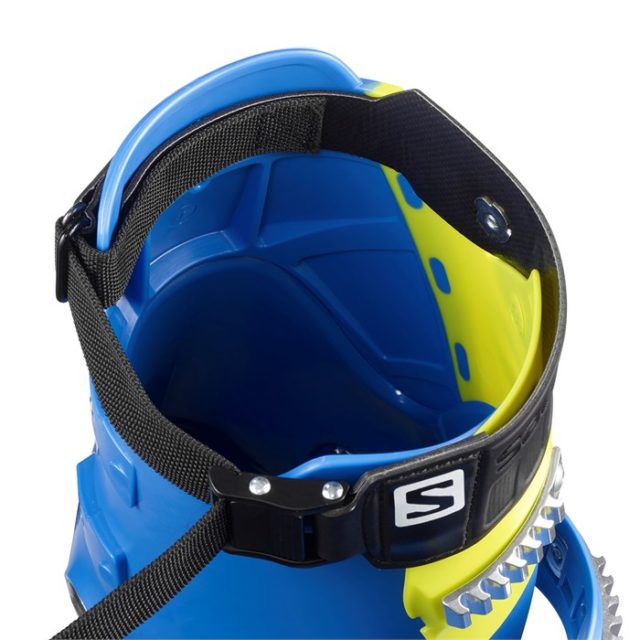
Soles
The S/Max 130 and S/Max 130 Carbon have standard ISO 5355 plastic alpine soles. While some of the new lightweight alpine boots like the Promachine 130 and Nexo LYT 130 offer GripWalk soles, Salomon has chosen to stick with traditional flat soles. As someone who has somehow managed to survive for years while walking to and from the car in ski boots with traditional flat soles, I’m totally fine with an alpine boot like the S/Max having alpine soles. Plus, purists can feel righteous about their unadulterated soles, while looking down upon the masses with their rubber and their appalling (possible) loss of power transfer.
Cuff / Ramp Adjustment
The S/Max boots do not come with adjustable cuff alignment like that seen on boots like the Promachine 130, but Salomon says that during the Custom Shell HD process users can get up to 3° of cuff alignment that way.
The S/Max boots have a stated ramp angle of 4°, and feature a standard boot board that can be ground by a bootfitter to adjust the ramp angle, canting, etc.
Fit
Jonathan Ellsworth: This is the part where we tell you to go to a trusted bootfitter to decide what boot will work best for your foot. But with that said, I will offer a quick take on how the S/Max 130 and S/Max 130 Carbon feel on my feet.
Both boots fit very similarly, with a few exceptions that I touch on below.
My Feet:
- Length (Left & Right): 271 & 274 mm
- Width (Left & Right): 100 & 99 mm
- Instep Height (L & R): 79 mm & 75 mm (The Boot Doctor’s Charlie Bradley describes this as a “high arch / high instep” — on a scale of 1-10, he calls my arch / instep a 8 or 9).
- Charlie also notes about my feet: Fairly stable, solid platform. A bit of pronation. A good amount of ankle range of motion (aka, “dorsiflexion”).
Out of the box, the S/Max 130 and S/Max 130 Carbon definitely feel like true low-volume boots. The heels feel snug (but not overly tight), they have very low insteps, and very low-volume cuffs. So just because Salomon decided to ease up on the weight of the S/Max line, don’t think that they also gave the boots some easy-going, sloppy fit.
But as I noted earlier, the S/Max boots all feature heat-moldable shells. So while the S/Max boots have a very low-volume fit out of the box, you can mold them to get a bit more room (Salomon says the boot’s internal forefoot width can be expanded by up to 6 mm).
I heat molded both the S/Max 130 and S/Max 130 Carbon. And after doing so, I’d say they are probably the most comfortable boots that are this low-volume that I’ve ever used. Of course, your feet aren’t my feet, but on my feet, these are still a fairly intense, definitely tight fit. I haven’t yet molded the Promachine 130 (which has a similarly low-volume fit), so I’ll report back once I’ve had a chance to compare the heat-molded Promachine 130 to the heat-molded S/Max 130 and S/Max 130 Carbon.
If there’s any area on the S/Max 130 and S/Max 130 Carbon where I personally could use a bit more room, it’d be the instep (and again, keep in mind that I have a pretty high instep). Even after heat molding, both boots’ insteps feel low, and I’d personally appreciate an extra mm or two of space there.
And this is also one area where the S/Max 130 and S/Max 130 Carbon do feel a bit different — the S/Max 130 Carbon feels slightly tighter over my instep. When it comes to instep height, the Nordica Pro Machine feels roomier than both the S/Max boots (though I would still definitely say that the Promachine 130 has a low-volume instep height), then the S/Max 130 was the next “roomiest” (again, it ain’t really roomy), and the S/Max Carbon — even after heat molding, it still had the tightest instep height (on my feet) of the 3 boots.
The punchline here is that if you have a really low instep, I definitely think all three of these boots should be on your radar, but especially the S/Max boots. And I think that anyone who has truly low-volume feet or who simply likes a truly low-volume fit ought to check these boots out.
FULL REVIEW
Intro
Eric Freson and I have now both spent time in the Salomon S/Max 130 and S/Max 130 Carbon. I added my thoughts, and now Eric adds his, including some notable differences between the standard S/Max 130 and S/Max 130 carbon.
Flex Pattern
Jonathan Ellsworth (5’10”, 175 lbs): Both the S/Max 130 and S/Max 130 Carbon feel like very legit 130-flex boots. Compared to a number of other “130” boots out there, you could even call these S/Max boots a 140. If you don’t really want or need a 130 flex, don’t get these boots — go with the S/Max 120.
I actually can get along just fine with a boot that’s a little easier to initiate the flex than the S/Max 130 and S/Max 130 Carbon (e.g., the HEAD Raptor 140 RS and the Lange RX 130 LV). But what I really appreciate about these S/Max boots is that their flex patterns are not brick-wall-like.
I’d say that, overall, the flex pattern feels a bit more linear than it is progressive. But I’d also say this boot definitely feels stiffer at the top of the than the Lange RX 130 LV, HEAD Raptor 140 RS, Atomic Hawx Ultra 130, and K2 Recon 130.
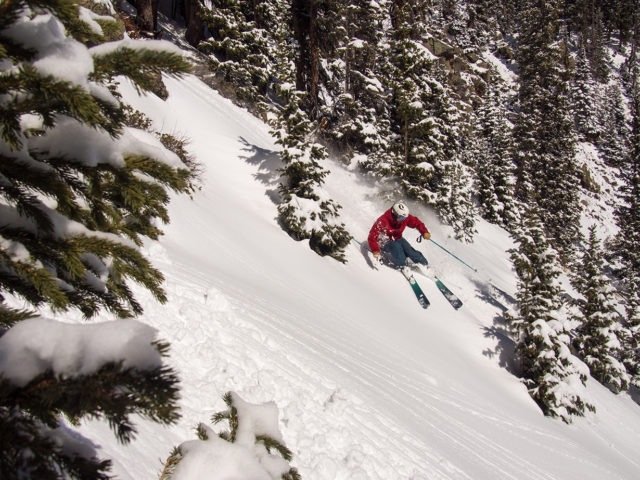
While so many “130” boots are getting easier and easier, the S/Max 130 is probably more representative of what a 130 should really feel like.
Again, if you don’t really want or need a legit 130, then just go with the S/Max 120. I certainly don’t need the stiffest boot out there, and I feel pretty confident that I could get along with the S/Max 120.
One thing I noticed about both S/Max boots was that I didn’t need to wrench the two upper buckles on the cuff very tight to maintain their stiff flex. I skied an extremely moguled-up run at Telluride with all 4 buckles undone — I just had the power strap tight — and I really didn’t even notice.
Eric Freson (5’9”, 170 lbs): When flexing into the S/Max 130 Carbon, it feels very stiff and fairly linear, meaning stiff off the top with no huge ramp-up deeper into the flex. This can manifest on snow as a lack of sensitivity / responsiveness when traveling at slower speeds, since the boots are not easy to flex initially. The flipside to this is that, once the pitch steepens or speed increases on or off piste, it’s much less difficult to initiate the flex of the boot, and it remains very supportive.
When reaching the end of the boots’ forward travel, neither of the boots felt like I was “hitting a wall,” which is great. I never experienced any sort of shin bang or hot spots from hammering through mogul fields, airs, and general reckless skiing over the course of the season.
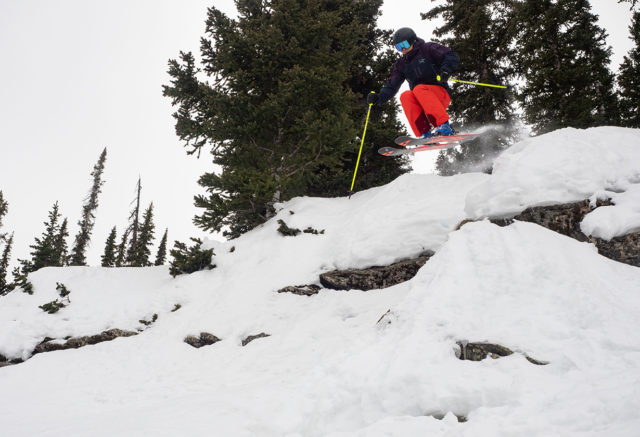
Finally, having experimented extensively with various power straps and booster straps, I think the S/Max boots do skiers everywhere a great service by routing the booster strap between the shell and the liner. You can really notice the difference this makes when experiencing violent fore / aft movements in your boots (e.g., when airing into and out of a mogul field), and realizing that your shin or calf didn’t have empty space between it and the liner at any point. It really helps.
I initially found myself over-tightening my buckles, and was surprised when I was popping them open after big impacts. After messing with the micro-adjustments, I was able to maintain the initial flex and snugness I was looking for without over-tightening to the point that buckles were flexing open.
Ski & Ground Feel
Jonathan: The S/Max boots provide very good on-snow feedback, more so than many other boots. So if you want to feel a direct connection to the snow and your skis, these S/Max boots are worth a look.
However, if you spend a lot of time hammering out laps in bumped-up, steep, off-piste terrain, you might be better off with a more “plush” boot like the Lange RX 130, HEAD Raptor 140 RS, or Salomon X-Pro 130. The S/Max boots are less about “plush,” and more about “precise.”
Eric: I spent the season doing exactly what Jonathan describes in the paragraph above. I also skied the boot without footbeds during this time (50% for performance and feel, 50% for fit), and will reiterate that this is a sensitive boot that provides excellent feedback.
After initially starting with the standard S/Max 130, I switched to the Carbon S/Max 130 for most of the season. The biggest reasons for this were (1) the Carbon version has a slightly stiffer flex, and more importantly (2) I felt like the rebound of the Carbon boot was more damped and controlled than the non-carbon version. This could be due to the carbon itself, or the change in the ratio of carbon to plastic, but either way, the S/Max 130 Carbon was a much slower-rebounding boot. And for the pretty wide and long skis I typically ski, the Carbon version felt much better for me than the faster-rebounding standard S/Max 130.
That being said, if I skied with an on-piste focus, (e.g., dedicated carvers, slalom skis, etc.), I think the non-carbon boot would be a great choice, since that faster rebound would be very welcome.
I did find both S/Max boots to be colder than many boots I have skied in. I’d attribute that to the thin-ish liner, but also (in my case) the lack of an insole or footbed providing insulation. If you struggle with cold feet or poor circulation (I don’t), know that these liners would not rank especially high on my “warmth for thickness” scale.
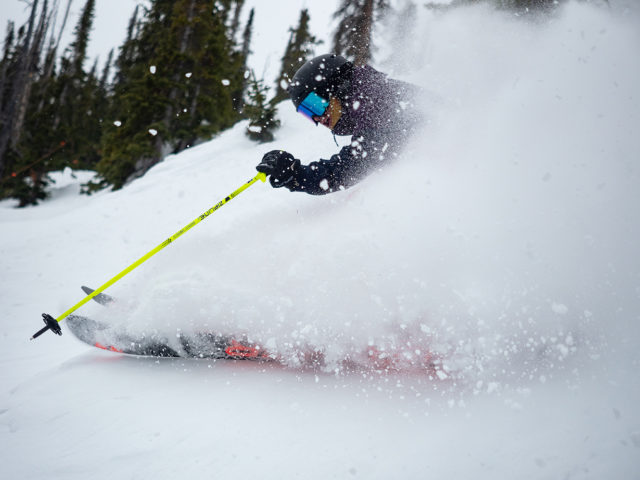
For someone using these as an off-piste boot, it’s worth noting that the soles are quite vulnerable to rocks. For someone who skis at a resort where the bootpacks are often snow-packed, it will be a non-issue. But if you ski somewhere that requires you to often walk on rocks as part of your daily laps (e.g., Jackson Hole), you may want to look elsewhere. In a week at Jackson Hole, I scratched and dinged up the S/Max 130 Carbon as much or more than an entire season of kicking around Crested Butte.
I never found the weight of the S/Max 130 Carbon to be a disadvantage throughout my time with them. I was concerned initially that I might crack them, that the lack of weight would mean a hard spike in flex, that there would be a lack of overall dampening, or that the flex would vary more depending on temperature. But I was very impressed with the S/Max 130 Carbon. One major advantage of this lack of weight is pretty obvious; bootpacks, side steps, and even the stairs out of Blister HQ were noticeably less fatigue-inducing than other, heavier boots that I have recently spent time in. When pointed downhill, the reduced swing weight was noticeable, though much, much less so than when walking around in the boots.
I found the S/Max 130 Carbon to be quite stable in terms of the flex, even across varying temperatures. There was a bit of change on the very extremes of the spectrum (very warm or very cold), but not something I was going to actively notice while skiing in them without paying specific attention to how they were responding to current temps.
Putting Them On & Taking Them Off
Jonathan: Both S/Max boots can be a bit difficult to put on, because they’re so low volume in the cuff and shoe.
And to be clear … this is by no means a criticism.
If you are going around complaining that you can’t quickly slip into and out of your legit 130-flex precision ski boot, then you probably need to admit that you don’t really need a boot like this, and / or reconsider what you can realistically expect from one ski boot.
We are seeing a lot of manufacturers make their “low volume” boots bigger and bigger, since, evidently, a lot of us like our boots to say “130 LV” or “140 LV” but we don’t actually want the sort of power or precision that generally accompanies a legit 130 or 140 “LV” boot. But Salomon isn’t dumbing things down here, and I applaud them for that. These boots are for skiers who really value power and precision. If that’s not you, don’t blame the boot.
Eric: Compared to a three-piece boot (what I often wear), putting on a low-volume, 130-flex overlap boot sucks. A lot. And Jonathan laughed at me a lot. If I’d ever needed to put these boots on with wet socks or in truly cold conditions, I might have been in trouble.
I really struggled with this. I won’t address my actual foot much in reference to “low volume” because, as stated above, skiing them without an insole isn’t typical or how the boot is designed.
All that said, I have fairly large calves, and was expecting to ski both boots using the outermost adjustments on the buckles. But I wound up in the end using more adjustment than I would have expected … and the result was an ankle and calf that were absolutely locked in. The liner is thin and dense, and so once I take away that space, I am left with a fit that leaves little to be desired.
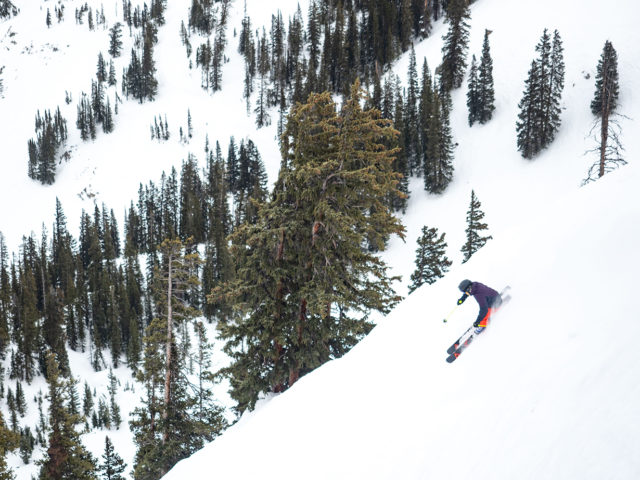
Who’s It For?
Jonathan: Advanced and expert skiers looking for a remarkable level of power and precision in a lightweight, low-volume package.
Eric: My advice to some skiers is to not overlook these as an off-piste boot! If you like the sound of a boot that’s both stiff and sensitive enough to be able to tell whether you just ran your edges over metamorphic or volcanic rock based on nothing more than the texture of the rock surface you can feel through the boot, these are for you. These S/Max 130’s provide outstanding snow-surface information in real time; a true low-volume fit; a stiff and smooth flex; great rebound characteristics; and a light weight without any perceived penalties.
Bottom Line
Salomon’s “S/Max” line of boots is about straight-up, unadulterated performance. And I’d say both the S/Max 130 and the S/Max 130 Carbon completely live up to that “S/Max” label.
Deep Dive: 130-Flex Alpine Boots
Become a Blister Member or Deep Dive subscriber to get access to our Deep Dive article on a bunch of 130-flex alpine boots, where we directly compare the S/Max 130 & S/Max 130 Carbon, Head Raptor 140 RS & Nexo LYT 130, Nordica Promachine 130, Atomic Hawx Ultra 130, and K2 Recon 130.

So we going to get a “Batman Award” from Blister now? :P
I would really like to see some comparisons vs the hawx ultra 130.
Does the last shape feel the same as the old XMax and XMax Pro boots?
Would be curious to know this as well.
So, how stiff did it feel? I’m thinking boots with this new plastic might be sensitive to temperature? Cold days = stiffer boots. Feel like a traditional 130?
Hey Corey- I found the S/Max 130 Carbon to be quite stable in terms of the flex, even across varying temperatures. There was a bit of change on the very extremes of the spectrum (very warm or very cold), but not something I was going to actively notice while skiing in them without paying specific attention to how they were responding to current temps.
Thanks Jonathan: flex pattern comparisons to Nordica, Head, etc. are quite helpful, but you leave my questions on the S/Max vs S/Max Carbon unanswered. Your In Depth review covers them both in basically one breath, making no distinctions. Is the only discernible difference $100 and 100g?
Hey Matt- I found notable differences between the two to be, (1) the Carbon version has a slightly stiffer flex, and more importantly (2) I felt like the rebound of the Carbon boot was more damped and controlled than the non-carbon version.
Nothing is said on any of the reviews that I have read about the Max 130 Carbon Ski Boots pertaining to their warmth in cold weather. Can you give me some information about that? Thank you
Hey Gary- I did find both S/Max boots to be colder than many boots I have skied in. I’d attribute that to the thin-ish liner, but also (in my case) the lack of an insole or footbed providing insulation. If you struggle with cold feet or poor circulation (I don’t), know that these liners would not rank especially high on my “warmth for thickness” scale.
Any thoughts on how the women’s smax 110/120 compare to boots like the Nordica promachine or tecnica mach 1 LV?
Hi. Thanks for the interesting writeup. Maybe you can comment on how do they compare to Technica Mach1 LV 130?
I tried the S/Max 100 (120 and 130 out of stock) and liked the fit. Curious how the 120 flex compares to my current 140 Raptor? Need a boot with less forward lean than the Raptor, but not stiffer.
Would you recommend sizing one size down for a better fit? I am a size 9.5 US and the specs say mondo 27.5.
@Joe H.
FWIW. I just spent a day in the s/max 120 this weekend. I’m coming off the Head Raptor RS 130. I loved the way the solly skied, but the 120 is noticeably softer in forward flex than the raptor. Super quick and capable laterally and didn’t notice the softer flex most of the time, but it felt too soft for me sometimes. I’m 165 lbs, 5’6″ tall and consider myself an expert skier with more of a dynamic and technical style vs a charger or a jibber.
Temps were 35 out so a factor in softness I’m guessing, but apples to apples still softer then my experiences with the raptor in warm weather….. Raptor does soften in warm weather – soft off the top but ramps up so never had a prob with overall stiffness. Solly didn’t ramp up when I hit stuff at speed – especially if off balance. I’ll be looking for the 130 or 130 carbon. I really loved the fit and feel and how this boot skis.
Hi, thank you.
For years, I have been using and LOVING my old K2 Spynes 130. (the yellow and red ones) They are dying abd cant get another pair.
For the last 10 days I have been using the Lange XT Freeride Pro Model 140, as I thought that would be the ticket. They fit great, and felt nice and flexy in the store.
After few days on them, I find them too stiff, especially when it got cold here. They flex nicely, perfect on groomers and skiing at 65% throttle, but when I really step on it, they bounce me around, feels like I dont have any “suspension”. Thought it was early season ski choice, but no, I think its the boots. And, when they throw me, they then buck me in the back seat momentarily, so I have lost a fair bit of confidence.
They seem to flex nicely, obviously on the stiff side, then just seem to “hit a wall”and wont flex anymore. Rather quickly.
Tried a Salomon S Max 120 today, it felt nice, like something I could enjoy. 120 just doesnt seem (sound)stiff enough and guys in shop turned that little plate around in the back to make it stiffer. Felt good, but cant help wonder about these 130’s.
So, 52, 220 lbs, 6’4”, over a million vertical feet a year in Revelstoke, ski Mantras and whatever else the shop lets me take, like the heavier damper skis, but ski something more mellow when with the wife….(one day a week)
Which of these Salomon boots should I be looking at? Would probably have to order them in, so need to nail this one…..
Thank you.
Chris.
j’ai skier deux saisons avec les s max 130.. super chaussures précises…Moniteur de skis je les conseille à des skieurs qui préfèrent la précision au confort…Attention aussi aux skieurs à fortes voûte plantaire…Meilleures salutations et bon skis…
Love these boots! Coming from Head Raptor 130, which is also a great boot I found the S/Max Carbon 130 to be more comfortable and ski better. I feel this boot is all terrain if you’re a powerful skier. Very natural stance, responsive. And not punishing as you may think in 130.
Hi, I am thinking To buy between the x Max 130 carbon and the s pro 130. I ski 50% on piste and 50% off piste. Can anybody guide me to the correct boots. Thanks
I notice within this review it seems the S/Max Carbon is the preferred boot for all-mountain varied terrain, steeps, bumps, trees, etc. however in the guide it mentions the Carbon is more for a true carver.
How do both of these boots compare to the Atomic Hawx Ultra S 130?
The Solomon’s fit my long skinny foot with a mid-highly flexible arch very well, however I ski a ton of varied terrain. The review comments make me more nervous on that. Wanting a boot with some good suspension and plushness.
Hi there, I am interested to know what you think about the fit compared to the X Max 120 (2016 model) which I have skied the last few seasons and really like, but they are starting to soften up a bit. I have a narrow foot with high arch; I am worried the S Max might not fit the same. Thoughts?
I’m also wondering how the last in these compares to the XMax boots. I’m skiing those, but stopping for new boots. I had always skied in 26.5 boots, but was able to go with a 25.5 in the XMax. The XMax had a reputation (I think) for having a deep heel pocket. With the shape of that boot and the heat molding process, I was able to drop a size. As such I am curious about how the last in the SMX compares. Also, Paul Forward comments on this in his review of the Lange RX 130 LV: “ The X Max was a fairly high-volume boot for having a stated 98 mm last (not to be confused with the 18/19 Salomon S/Max, which is a very low-volume boot).” This seems to indicate the old XMax is quite a bit different than the SMax
Hey thanks for the write up,
Can the toe and heel parts of the soles be replaced on the SMax Carbon 130?
Any idea how the instep height compares between the S/Max vs. S/Pro in 130/120? Does the S/Pro offer more instep room than the S/Max ?